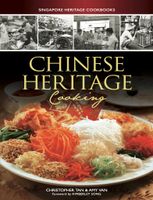Stir-frying
By Christopher Tan and Amy Van
Published 2018
Wok hei (literally wok breath), a ‘scorched’ quality of aroma with notes of caramelisation, is a trademark of expert stir-frying, and can only be achieved with high heat and a well-seasoned wok. Before the eras of cooker exhaust hoods and small apartments, an outdoor back kitchen with a wok station used to be a standard feature in houses, testament to the fire and fumes involved in wok cooking.
Become a Premium Member to access this page
Unlimited, ad-free access to hundreds of the world’s best cookbooks
Over 160,000 recipes with thousands more added every month
Recommended by leading chefs and food writers
Powerful search filters to match your tastes
Create collections and add reviews or private notes to any recipe
Swipe to browse each cookbook from cover-to-cover
Manage your subscription via the My Membership page
Part of
Advertisement
Related Recipes
-
-
-
-
Related Reference
-
-
-
-
Advertisement




